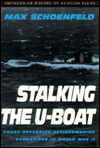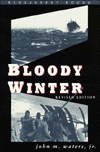The United States Coast Guard is a national maritime police force. The United States Treasury Department Revenue Cutter Service was established in 1790 to deter smuggling and enforce collection of import tariffs. The name was changed to Coast Guard in 1915, following the sinking of SS TITANIC, when the old Revenue Cutter Service assumed maritime lifesaving duties including the Greenland iceberg patrol. On 1 July 1939 the Coast Guard assumed responsibility for coastal navigation aids including bouys and lighthouses. Coast Guard patrols of Greenland included military responsibilities after German occupation of Denmark in 1940.
The United States Navy Department was given control of the Coast Guard on 1 November 1941, and held control through 1946. The Navy tended to retain the most capable ships and most modern equipment for Navy personnel and assign unwanted ships and aircraft to Coast Guard personnel. The Navy similarly retained control of unique or high profile operations and assigned routine duties to the Coast Guard. Many of these assignments were backhanded compliments to the Coast Guard's experience with merchant shipping and superior seamanship in coastal waters and in the higher latitudes of the North Atlantic.
The Coast Guard continued Greenland patrols and was given responsibility for American transatlantic convoy escort groups A-1, A-2, and A-3 as the Navy focused attention on the Pacific. The Coast Guard had 17 gunboats available for North Atlantic convoy escort after ten were loaned to the Royal Navy in early 1941 as BANFF class sloops. With the exception of two conversions, Coast Guard received no more gunboats until 75 frigates became available beginning in mid-1943. Coast Guard personnel later manned 30 destroyer escorts. These ship types were not unknown to the Coast Guard, which had operated old navy flush deck destroyers to catch liquor smugglers during prohibition years. With pride in an independent identity, however, Coast Guardsmen refer to their navy gunboats, sloops, frigates, submarine chasers, etc. as "cutters" in the tradition of the old Revenue Cutter Service.
As adequate numbers of Royal Navy frigates became available for convoy escort, Coast Guard personnel were diverted from that duty to the large amphibious invasion fleets of the later war years. The 327 foot cutters were converted to amphibious force flagships in 1944-45 and Coast Guard personnel manned nearly 500 troop transports, LSTs, and smaller ships.
In addition to these major ship types, the Coast Guard maintained anti-submarine patrols of the United States coast using smaller cutters and aircraft. U-166 was sunk by a J4F of Coast Guard squadron 212 based at Houma, Louisiana, and piloted by ENS Henry White USCG. Coast Guard lighthouse tender Acacia (WAGL-200) was sunk south of Haiti 15 March 1942 by gunfire of U-161.
Interesting link: The Official United Coast Guard website
Cutters
240 foot gunboats: 1780 tons, 16 knots, 2x5" 2x3" and 4x20mm
guns.
Haida (WPG-45), Modoc (WPG-46), Mojave (WPG-47),
and Tampa (WPG-48)
These cutters, launched in 1921, were assigned to the Greenland
patrol.
165 foot patrol boats: 337 tons, 16 knots, 2x3" & 2x20mm guns.
Argo (WPC-100), Ariadne (WPC-101), Atalanta (WPC-102)
Aurora (WPC-103), Calypso (WPC-104), Cyane (WPC-105)
Daphne (WPC-106), Dione (WPC-107), Galatea (WPC-108)
Hermes (WPC-109), Icarus (WPC-110), Nemesis (WPC-111)
Nike (WPC-112), Pandora (WPC-113), Perseus (WPC-114)
Thetis (WPC-115) and Triton (WPC-116)
These low endurance cutters were built in the early 1930's.
Cutters of this class are credited with sinking
U-157 and
U-352 off the southeastern United States.
165 foot gunboats: 1005 tons, 13 knots, 2x3" & 3x20mm guns.
Algonquin (WPG-75), Comanche (WPG-76), Escanaba (WPG-77)
Mohawk (WPG-78), Onondaga (WPG-79), and Tahoma (WPG-80)
These high endurance cutters, launched in 1934, were too slow for
effective convoy escort. Tampa, Comanche, and Escanaba were
escorting small convoy SG-19 when 5252 ton United States Army
transport Dorcester was torpedoed by
U-456. 677 men died in what
is remembered as one of the United States worst troopship losses
of the war. Escanaba was destroyed off Ivigtut, Greenland, 13
June 1943 by an explosion of undetermined cause. There were only
2 survivors from her crew of 105.
327 foot gunboats: 2216 tons, 20 knots, 125 men.
Bibb (WPG-31), Campbell (WPG-32), Duane (WPG-33),
Alexander Hamilton (WPG-34), Ingham (WPG-35),
Spencer (WPG-35) and Taney (WPG-37)
These cutters were built at the Philadelphia, New York, and
Charleston navy yards in 1936 using the Washington naval treaty
gunboat pattern of USS Erie (PG-50). (Erie was torpedoed by
U-163 off Curacao on 12 November 1942.) The cutters rejected
treaty armament of four 6"/47 guns in favor of lighter weapons.
Taney mounted 4 single 5"/38 guns in enclosed mounts; but was
considered less satisfactory than the remaining cutters which
carried 3 single 5"/38 and 3 single 3"/50 guns in open mounts.
Two cutters were assigned to each of the American transatlantic
convoy groups. Those escort groups were filled out with Canadian
corvettes and a few American flush deck destroyers. Hamilton was
torpedoed by U-132 off Iceland and capsized in tow on 29 January
1942. Cutters of this class are credited with sinking
U-175,
U-606, and U-626 on the North Atlantic convoy routes.
304 foot frigates: 1430 tons, 18 kts, 180 men, 3x3" and 10x20mm
guns.
Tacoma (PF-3), Sausalito (PF-4), Hoquiam (PF-5)
Pasco (PF-6), Albuquerque (PF-7), Everett (PF-8)
Pocatello (PF-9), Brownsville (PF-10), Grand Forks (PF-11)
Casper (PF-12), Pueblo (PF-13), Grand Island (PF-14)
Annapolis (PF-15), Bangor (PF-16), Key West (PF-17)
Alexandria (PF-18), Huron (PF-19), Gulfport (PF-20)
Bayonne (PF-21), Gloucester (PF-22), Shreveport (PF-23)
Muskegon (PF-24), Charlottesville (PF-25)
Poughkeepsie (PF-26), Newport (PF-27), Emporia (PF-28)
Groton (PF-29), Hingham (PF-30), Grand Rapids (PF-31)
Woonsocket (PF-32), Dearborn (PF-33), Long Beach (PF-34)
Belfast (PF-35), Glendale (PF-36), San Pedro (PF-37)
Coronado (PF-38), Ogden (PF-39), Eugene (PF-40)
El Paso (PF-41), Van Buren (PF-42), Orange (PF-43)
Corpus Christi (PF-44), Hutchinson (PF-45), Bisbee (PF-46)
Gallup (PF-47), Rockford (PF-48), Muskogee (PF-49)
Carson City (PF-50), Burlington (PF-51), Allentown (PF-52)
Machias (PF-53), Sandusky (PF-54), Bath (PF-55)
Covington (PF-56), Sheboygan (PF-57), Abilene (PF-58)
Beaufort (PF-59), Charlotte (PF-60), Manitowoc (PF-61)
Gladwyne (PF-62), Moberly (PF-63), Knoxville (PF-64)
Uniontown (PF-65), Reading (PF-68), Peoria (PF-69)
Evansville (PF-70), New Bedford (PF-71), Lorain (PF-93)
Milledgeville (PF-94), Orlando (PF-99), Racine (PF-100)
Greensboro (PF-101) and Forsyth (PF-102)
American shipyards built a modified version of the Royal Navy's RIVER class frigate. The United States Navy preferred American designed destroyer escorts being produced at the same time. The frigates (except for 21 delivered to the Royal Navy as their COLONY class) were assigned to Coast Guard personnel experienced with reciprocating machinery. Like the Coast Guard manned destroyer escorts, however, these ships were not officially transferred from the Navy to the Coast Guard. Moberly shares credit for sinking U-853 off New York.
255 foot gunboats: 1563 tons, 18 knots, 150 men, 2 twin 5"/38
guns.
Owasco (WPG-39), Winnebago (WPG-40), Chautaqua (WPG-41)
Sebago (WPG-42), Iroqois (WPG-43), Wachusett (WPG-44)
Escanaba (WPG-64), Winona (WPG-65), Klamath (WPG-66)
Minnetonka (WPG-67), Androscoggin (WPG-68)
Mendota (WPG-69) and Ponchartrain (WPG-70)
These were the first wartime constructed gunboats actually
transferred to the Coast Guard. They were intended to replace
the cutters loaned to the Royal Navy, and some repeated the names
of earlier wartime losses. Delivery began in mid-1944, and some
were not completed until after cessation of hostilities.
Compiled by Al Wellman
Buy this title at amazon.co.uk |
Books dealing with this subject include
|



